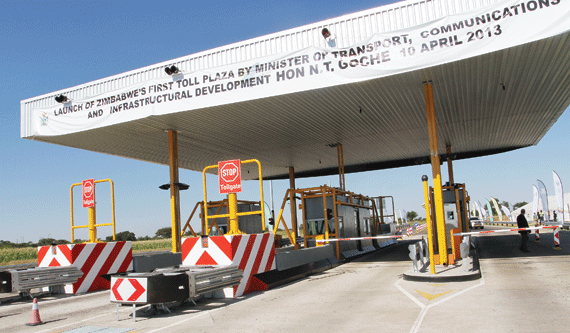
THE decision by the Transport and Infrastructural Development minister Obert Mpofu to introduce urban tollgates in cities presents a long-term systems approach to Zimbabwe’s transport and infrastructure management.
– Kuthula Njokweni
It is unfortunate that the debate has revolved primarily around tollgates when there is a wider scope to this debate.
Tollgates are an effective financing mechanism that will present Zimbabwe with resources to embark on a strategic shift in sustainable transportation infrastructure development and traffic management.
Zimbabweans should understand four realities about the transportation infrastructure situation.
First, the time for continuous expansion of the capacity of road networks is reaching saturation point and new ways of managing traffic and infrastructure should be identified and implemented.
Second, public funds are not enough to sustain or maintain roads at the current or anticipated future levels based on the prevailing interest to expand traffic and the road network.
Third, borrowing to build and operate a heavily subsidised transportation infrastructure is not sustainable.
- Chamisa under fire over US$120K donation
- Mavhunga puts DeMbare into Chibuku quarterfinals
- Pension funds bet on Cabora Bassa oilfields
- Councils defy govt fire tender directive
Keep Reading
Fourth, the rapid expansion of cars on our roads is simply unsustainable and becoming a strain on economic and social development.
This is the context within which Mpofu has to strategise to manage our traffic and transportation infrastructure.
The objective of his strategic plan should focus on traffic congestion and establishing a sustainable transportation infrastructure. The strategy will include three themes.
First, make motorists pay the full cost of driving by imposing a premium. Motorists argue that they already pay taxes through vehicle registration.
That is true to some extent, because vehicle registration tax does not reflect the full costs of driving and other related social costs.
Vehicle registration taxes don’t cover the per capita full cost of road use. Motor vehicles cause air pollution, which has become a major source of pollution in cities.
Emissions from vehicles cause several illnesses such as chronic bronchitis, lung cancer, heart attacks and stroke. Further, motor vehicle air pollution causes damage to the ecosystem.
Currently, motorists do not pay for these social, ecological and health problems directly linked to their activities on the road.
Second, there is need to change the culture on the conventional understanding of transportation as predominantly motor vehicles.
Supposing that the government introduces tollgates, it should move ahead and reform the traditional transportation system to a different, more sustainable and environmentally-friendly multimodal one.
This approach consists of integrating and promoting all the different forms of transportation including, but not limited to buses (commuter omnibuses included), cars, trains, bicycles, walking, etc.
Some countries such as Sweden, Denmark and Canada have successfully implemented this approach.
It is possible to go down that route! If we pursue world-class standards in democracy, governance, financial management systems, etc, we should be able to establish such standards for our transportation strategy and policies!
However, it will be difficult to do so if we cannot take initial steps to raise the necessary funds through tollgates to make drivers pay the full costs of driving as well as manage congestion.
Thirdly, tollgates will — over time — encourage people to drive only when it’s absolutely necessary and, therefore, cause decongestion.
London is one of the success stories on how to manage congestion. The decongestion will provide an opportunity to local governments to reform the urban transportation landscape by incorporating a multi-modal transportation system.
Key elements of the plan could include reducing vehicle lanes and parking spaces, while establishing bicycle lanes and pavements for pedestrians and the disabled.
Indeed, critics of tollgates will argue that there are other alternatives to fund Zimbabwe’s long-term transportation infrastructure strategy.
One such way is to adopt a private-public partnership approach.
This arrangement is good in other forms of infrastructure projects, but most likely unsuitable for a project to reduce congestion and implement a multi-modal transportation system.
The multi-modal transportation system will focus on managing (read curbing) the number of vehicles driving on city roads than increasing it and, therefore, this is likely a disincentive for the private player to be involved.
However, new economic opportunities exist to provide other services such as bicycle renting.
Another alternative is to privatise the roads so that the private sector charges drivers the full cost of driving on the road.
A fuel tax is another policy instrument that the government can consider to introduce to fund transportation infrastructure.
Tollgates are a critical policy tool intended to fund transportation infrastructure and manage traffic.
They will assist in the systematic elimination of potholes and clean-up of the cities through employment of well-paid municipal workers and restoration of the dignity of labour throughout all our cities.
All this enhances our day to day quality of life.










